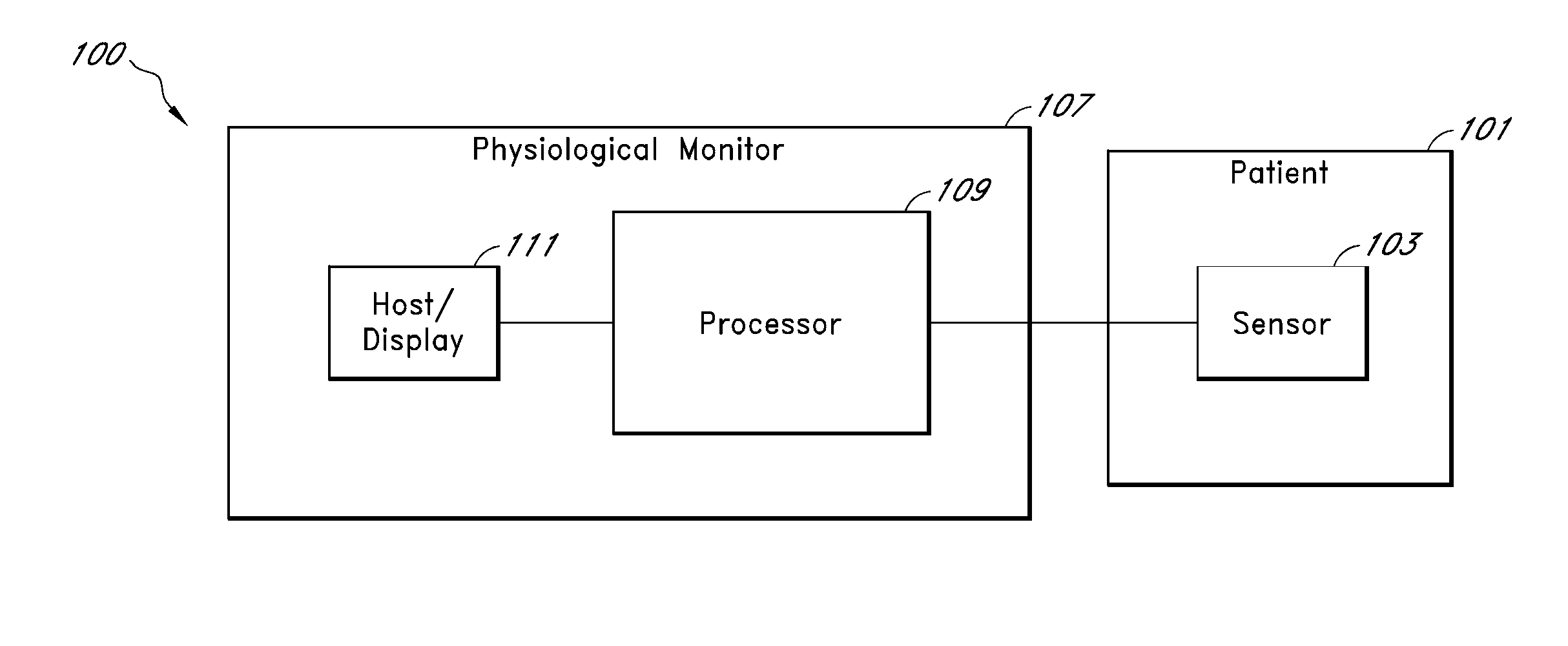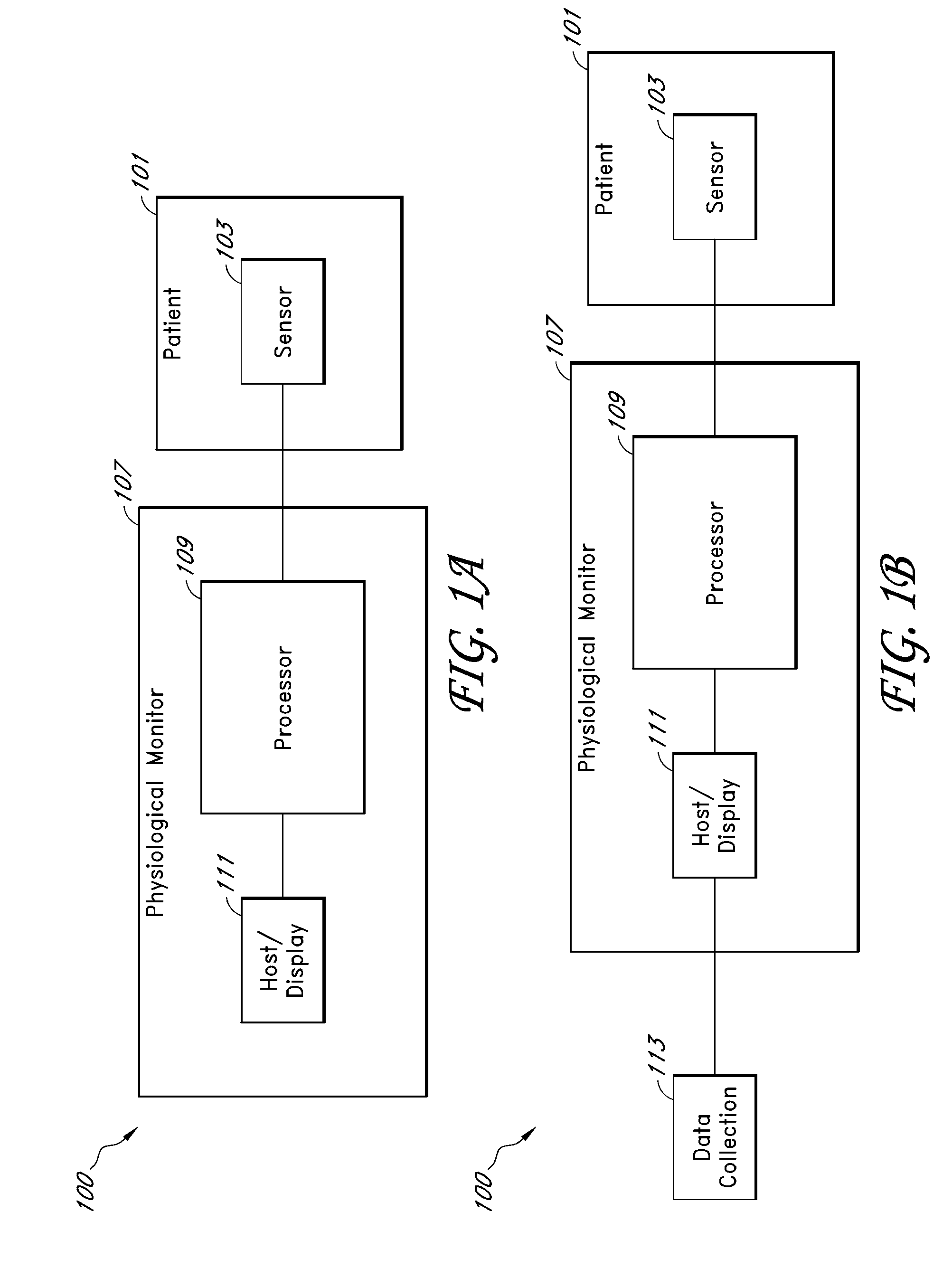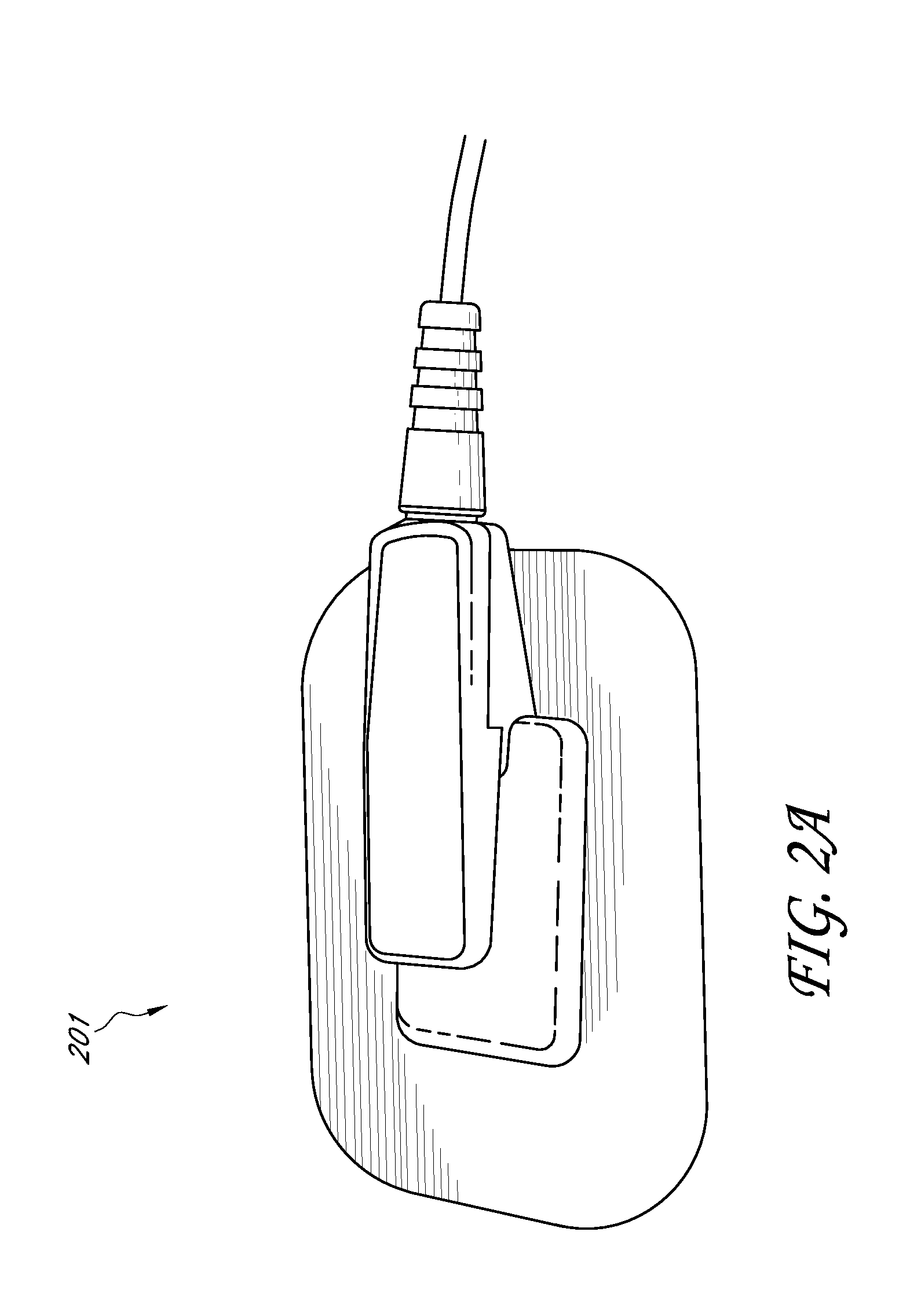Systems and methods for determining a physiological condition using an acoustic monitor
a technology of physiological condition and acoustic monitor, which is applied in the field of systems and methods for determining physiological condition using acoustic monitor, can solve the problems of affecting the accuracy of acoustic monitoring,
- Summary
- Abstract
- Description
- Claims
- Application Information
AI Technical Summary
Benefits of technology
Problems solved by technology
Method used
Image
Examples
Embodiment Construction
[0155]Various embodiments according to the invention will be described hereinafter with reference to the accompanying drawings. These embodiments are illustrated and described by example only, and are not intended to limit the scope of the invention.
[0156]In various embodiments, a physiological monitoring system comprises or includes an acoustic signal processing system that measures and / or determines any of a variety of physiological parameters of a medical patient. For example, in an embodiment, the physiological monitoring system includes an acoustic respiratory monitor. An acoustic respiratory monitor can determine any of a variety of respiratory parameters of a patient, including respiratory rate, expiratory flow, tidal volume, minute volume, apnea duration, breath sounds, rales, rhonchi, stridor, and changes in breath sounds such as decreased volume or change in airflow. In addition, in some cases the acoustic signal processing system monitors other physiological sounds, such ...
PUM
 Login to View More
Login to View More Abstract
Description
Claims
Application Information
 Login to View More
Login to View More - R&D
- Intellectual Property
- Life Sciences
- Materials
- Tech Scout
- Unparalleled Data Quality
- Higher Quality Content
- 60% Fewer Hallucinations
Browse by: Latest US Patents, China's latest patents, Technical Efficacy Thesaurus, Application Domain, Technology Topic, Popular Technical Reports.
© 2025 PatSnap. All rights reserved.Legal|Privacy policy|Modern Slavery Act Transparency Statement|Sitemap|About US| Contact US: help@patsnap.com



